
Locating the pig pasture
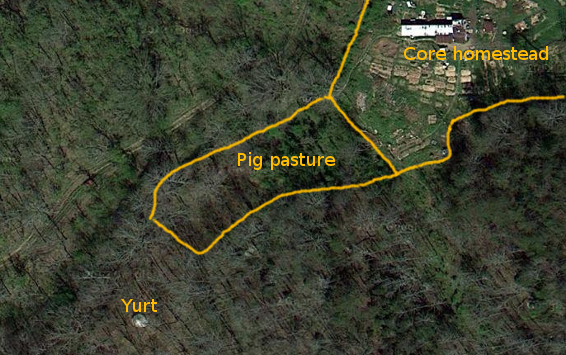
I realized I'd never
shared how the future
pig pasture fits
into the bigger picture, so here's a map for those of you who enjoy
them. The aerial photo is from around this time last year, before
we took
down the yurt.
What's hard to see is that our core homestead, the pig pasture, and the
yurt are all on little semi-flat plateaus, separated by gullies, but
elevated a good distance above the floodplain. I'm hoping the
semi-flat part will mean less erosion from pig feet as they tear up the
Japanese honeysuckle.
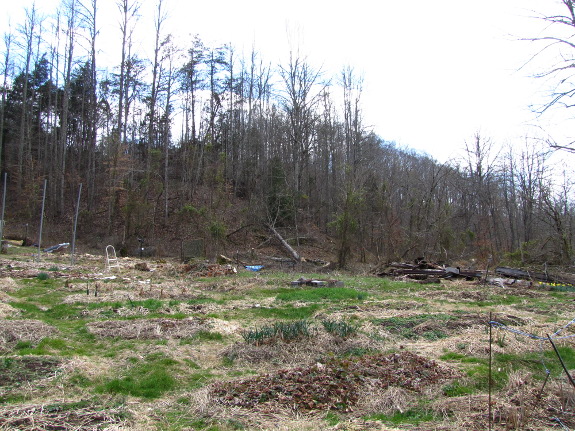
For map-phobes, here's a
photo instead. I'm standing in front of the trailer and looking
southwest over the front garden toward the pig pasture. (Yes,
Thursday was a very gray day.)
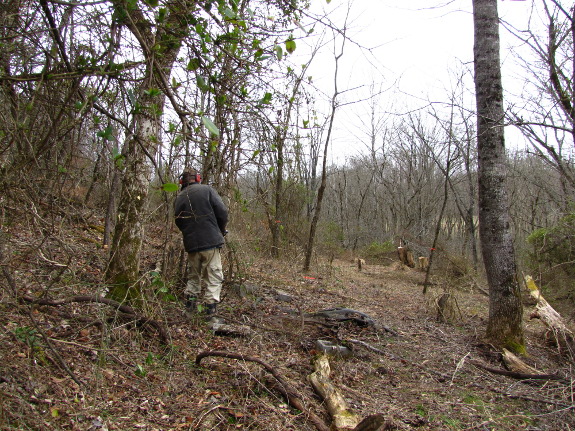
Entering the pig pasture
from the blueberry patch, Mark had already cut down a few little trees
at the time of this picture, but not very many. You would expect
more growth than this for an area that's been vacant for three or four
decades, but I suspect over-farming combined with invasive Japanese
honeysuckle held trees back. The vines also make it tough to cut
and clear the trees, but we persevered.
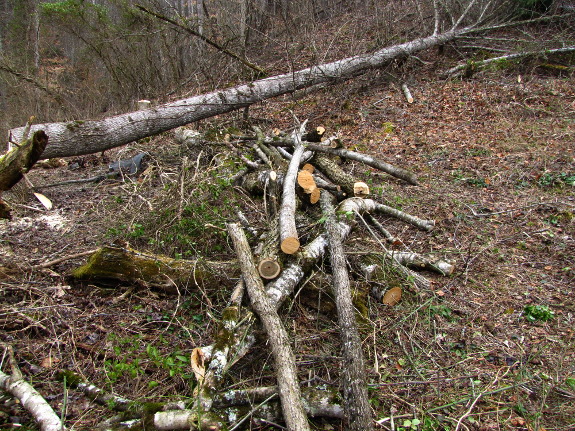
Here's the result of an
afternoon's work. Trees in this stack will become next year's
firewood and include sassafras, box-elder, sourwood (which I would have
kept for the bees, but missed IDing until it was already cut), and
black birch. Mark also cut some of the saddest-looking black
locusts I've ever seen, but I saved a few nicer-looking ones as nectary
plants. There's one big oak who will also be saved for the
acorns, along with some little nut trees I planted here a few years ago.
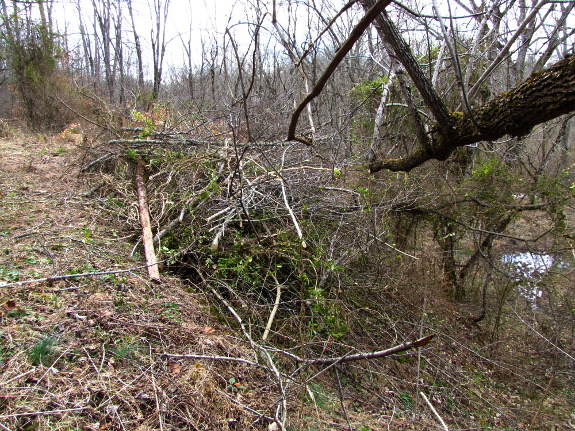
I always feel a little
guilty making brush piles because I know that in some parts of the
world, this would be the only wood available for cooking and heating
fires. For us, though, the juice isn't worth the squeeze, so I
piled branches up on the edge of the plateau, past where the fence will
run. In a perfect world, the brush might rot down in five or ten
years and provide a rich terrace for fruit-tree planting. Or
maybe it'll just keep the songbirds happy.
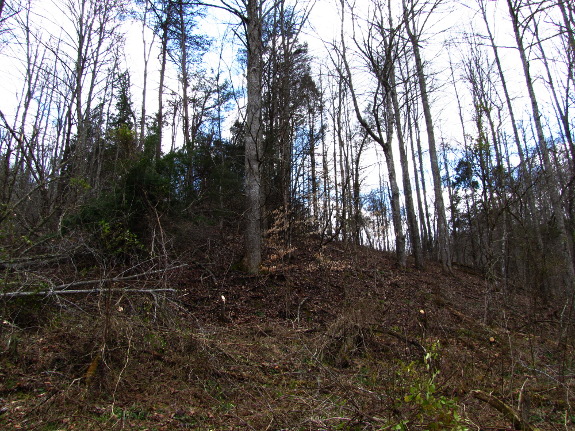
Mark cleared about a
third of the plateau in a couple of hours Thursday afternoon, but we've
got some big decisions to make today. I've started eying the
hillside just above the pig pasture for orchard expansion --- it
flattens out into a little ridge before heading back up the main
hillside. But if I want to clear this area, some of the biggest
trees will need to come down now before fences go up downhill.
I've regretted it in the past when I've rushed and left trees like this
in place, so I suspect we'll go ahead and take them down, even if that
makes it less likely we'll get all of the work done in time to buy pigs
this spring.
Want more in-depth information? Browse through our books.
Or explore more posts by date or by subject.
About us: Anna Hess and Mark Hamilton spent over a decade living self-sufficiently in the mountains of Virginia before moving north to start over from scratch in the foothills of Ohio. They've experimented with permaculture, no-till gardening, trailersteading, home-based microbusinesses and much more, writing about their adventures in both blogs and books.
Want to be notified when new comments are posted on this page? Click on the RSS button after you add a comment to subscribe to the comment feed, or simply check the box beside "email replies to me" while writing your comment.

Couple points from experience be careful about placing brush piles near gardens they attract rabbits. When we first moved to this farm we had brush piles and couldn't figure out where all the rabbits were coming from that raided our gardens nightly that spring. Seems several mama rabbits were raising litters of babies under the brush piles my husband had not burned yet.
I grew up in Louisiana and some of my fathers property was swamp. They actually used the swamp as pastures because the pigs cleared out the snakes so he said. Did you know a pig can eat a poisonous snake and not die? Much of his original farm was actually cleared by pigs and then fenced for pasture.